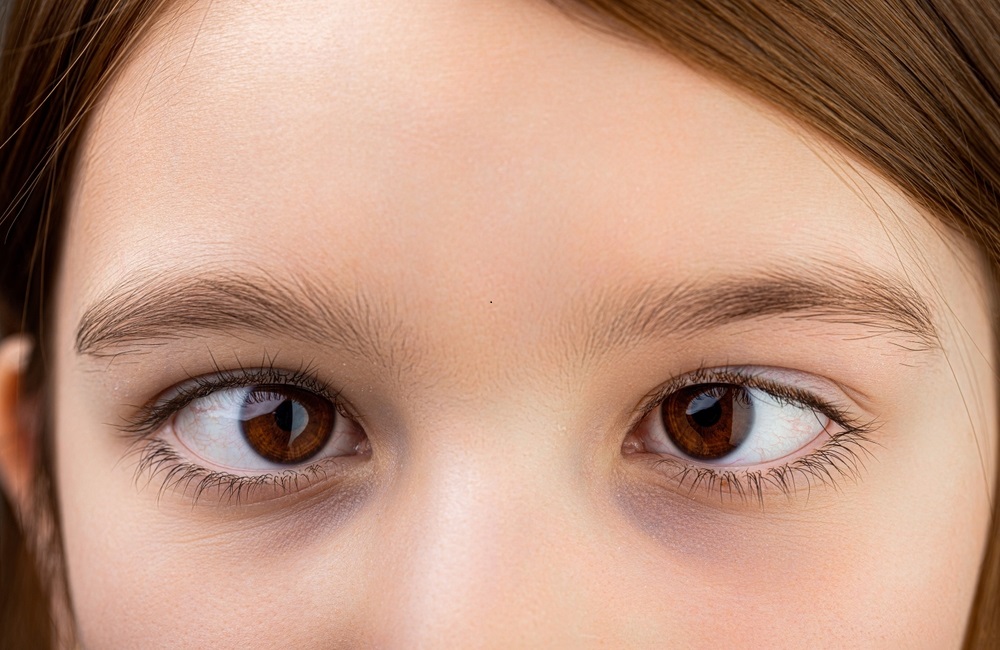Strabismus is a visual disorder that affects how the eyes align. It is sometimes referred to as crossed eyes or squint. We go into the complexities of this disease in this extensive article, looking at its causes, symptoms, available treatments, and potential life-impacting effects.
Contents
What is Strabismus?
The condition known as strabismus is caused by improper eye alignment, making it difficult to focus on two objects simultaneously. The illness can appear in some ways, such as esotropia (inward turning of the eye) or exotropia (outward turning).
Types
There are several types of this disease, classified based on the direction of eye misalignment. Here are some common types:
Esotropia: Inward Turning
Esotropia is a type of eye disease, a vision condition where the eyes are not aligned properly. In the case of esotropia, one or both eyes turn inward towards the nose. This condition is called “crossed eyes” or “eye misalignment.”
Esotropia can manifest at various ages, including infancy, childhood, or adulthood. The eyes’ inward turning can vary, and it may be constant or intermittent. The causes of esotropia can be diverse, including problems with eye muscles and nerves or a failure of the eyes to work together.
Treatment
Treatment for esotropia aims to align the eyes and restore binocular vision. Options may include:
Glasses: Prescription glasses can help correct refractive errors that might contribute to esotropia.
Eye exercises: Vision therapy or eye exercises may be recommended to strengthen eye muscles and improve coordination between the eyes.
Prism lenses: Prism lenses can alter how light enters the eyes, helping to reduce eye misalignment.
Patch therapy: In cases where one eye is significantly weaker, patching the stronger eye may encourage the weaker eye to become stronger and straighten.
Surgery: In some instances, surgical intervention may be necessary to correct the eyes’ alignment. This involves adjusting the eye muscles to achieve proper alignment.
Exotropia: Outward Turning
Exotropia is another form of this disease where one or both eyes turn outward, away from the nose. This condition is often called “wall-eyed” or “divergent strabismus.” Exotropia can occur intermittently or constantly and may be more noticeable when a person is tired or not focusing well.
Similar to esotropia (inward turning of the eyes), exotropia can have various causes. It may result from issues with eye muscles nerves, or problems with eye coordination.
Treatment
Treatment options for exotropia depend on the severity of the condition and the underlying causes. They may include:
Glasses: Prescription glasses, especially for correcting farsightedness, may be recommended to address refractive errors.
Vision therapy: Eye exercises and vision training can help improve eye coordination and strengthen eye muscles.
Prism lenses: Similar to esotropia, prism lenses can modify how light enters the eyes and reduce the outward turning.
Patch therapy: If one eye is weaker, patching the stronger eye may encourage the weaker eye to strengthen and align properly.

Also, this approach is often used to address certain visual conditions or disorders, particularly those related to binocular vision and amblyopia (commonly known as lazy eye).
Surgery: In some cases, surgical intervention may be necessary to adjust the eye muscles and achieve proper eye alignment.
Causes
Understanding the causes of this disease is crucial for effective management. While genetics and family history play a role, other factors such as eye muscle imbalance, neurological issues, or trauma can contribute to the misalignment.
Signs and Symptoms
Detecting this disease early is essential for prompt intervention. Common symptoms include double vision, eye fatigue, and difficulty maintaining eye contact.

Observing these signs in children is particularly important, as early treatment can significantly improve outcomes.
Diagnosing Strabismus: The Role of Eye Exams
Diagnosing this disease involves a comprehensive eye examination by a qualified ophthalmologist. The evaluation assesses eye alignment, visual acuity, and eye movement coordination.
Living with Strabismus
It can impact daily life, from social interactions to self-esteem. However, with proper management and support, individuals with this disease can lead fulfilling lives.
Strabismus and Children Addressing Pediatric Concerns
Early detection and intervention are crucial for children with this disease. Timely treatment can prevent long-term vision issues and promote healthy visual development. That’s why the pediatric eye exam is very important.
FAQs
Can this disease be treated without surgery?
Yes, milder cases can often be managed with non-surgical interventions such as eyeglasses or eye exercises. It is advised to follow up with an eye care specialist regularly to assess improvement.
Is this eye disease only a childhood condition?
No, it can occur at any age. While it often manifests in childhood, adults can develop it as well. You must get expert assistance if you observe any indications of ocular misalignment.
Can strabismus cause permanent vision loss?
Untreated strabismus can lead to vision issues, but with timely intervention, permanent vision loss is rare. However, consistent eye care and adherence to treatment recommendations are crucial for maintaining optimal vision.
Are there support groups for individuals with strabismus?
Yes, many online and local support groups provide a platform for individuals with this disease to connect and share experiences. Joining these communities can offer valuable insights and emotional support throughout the journey.
Can this disease recur after surgery?
In some cases, it may recur after surgery, requiring further intervention. Regular follow-ups with an eye care specialist are crucial to promptly monitor for any changes and address recurrence.
Conclusion
In conclusion, understanding strabismus is vital for those affected and their families. This article has explored the various facets of this eye condition, from its types and causes to diagnosis and treatment options.

